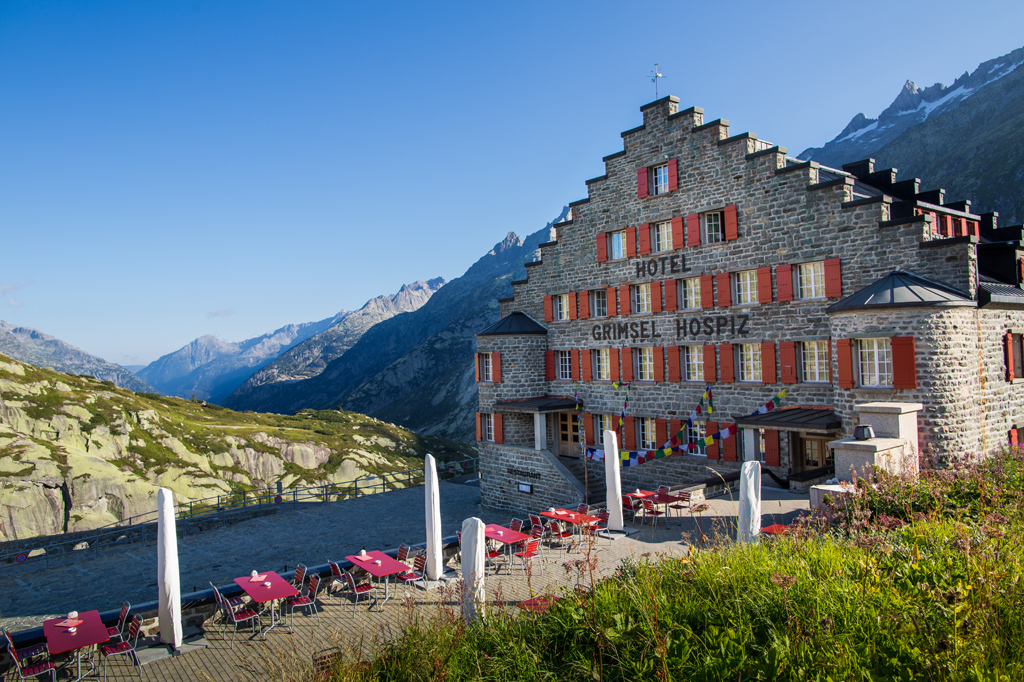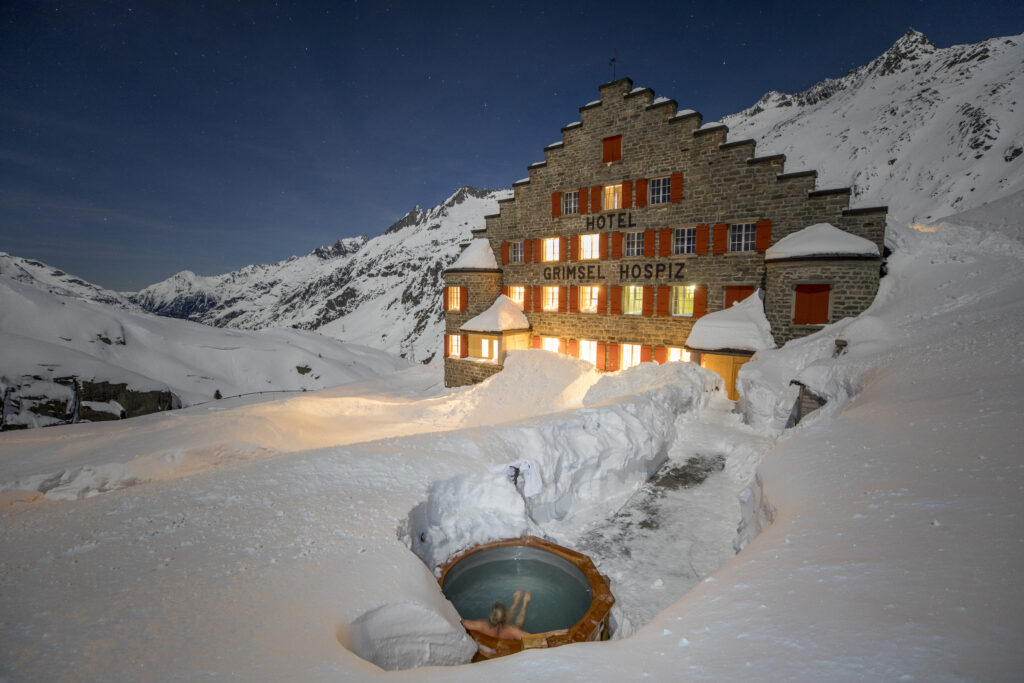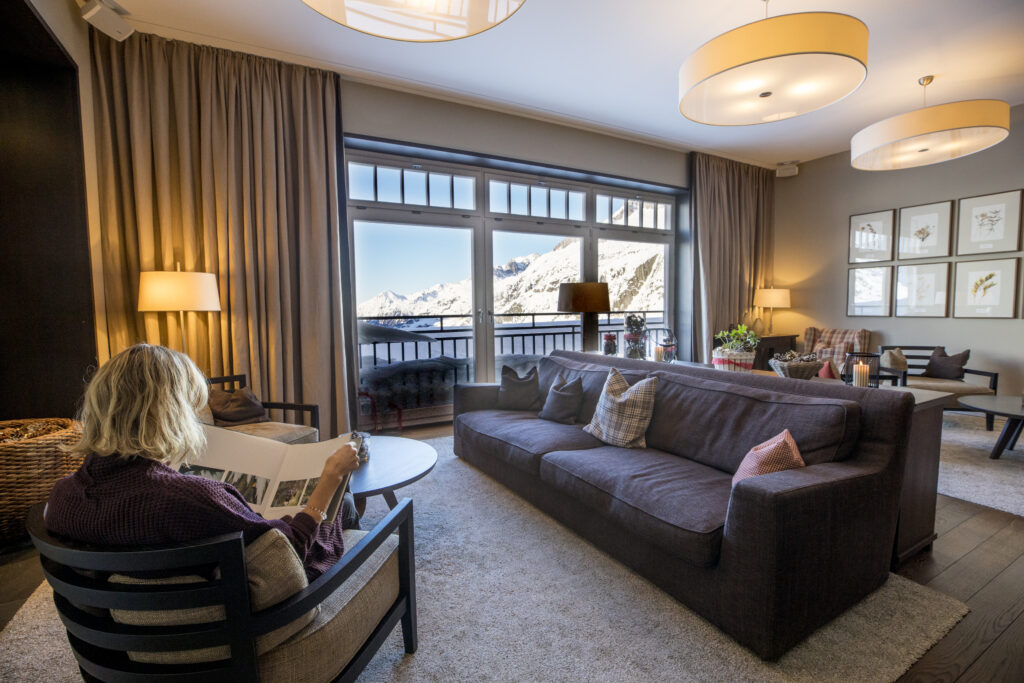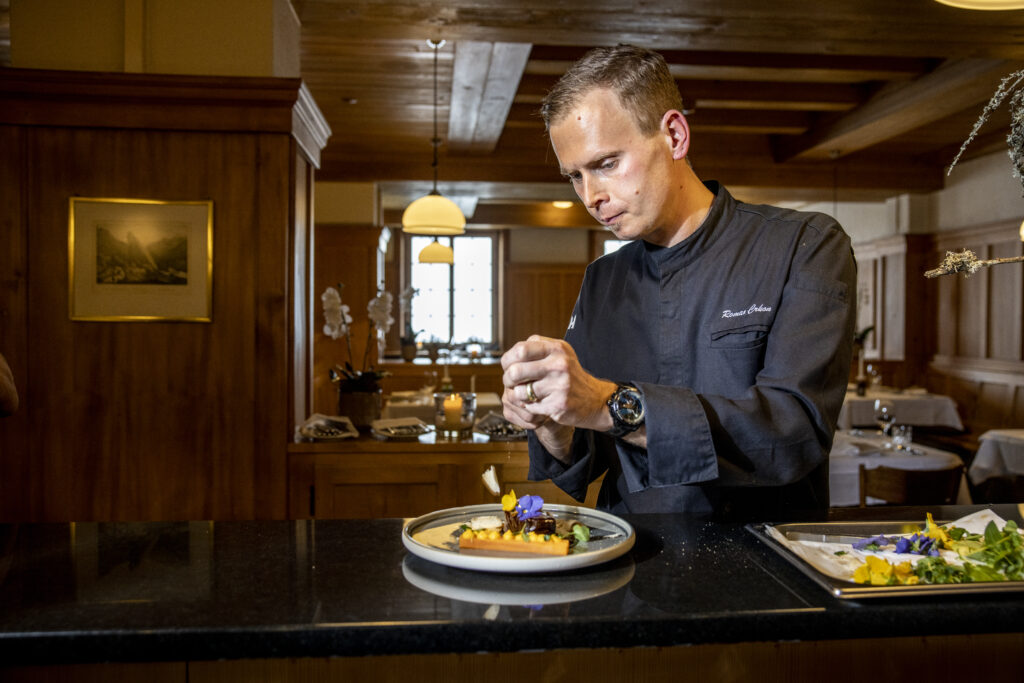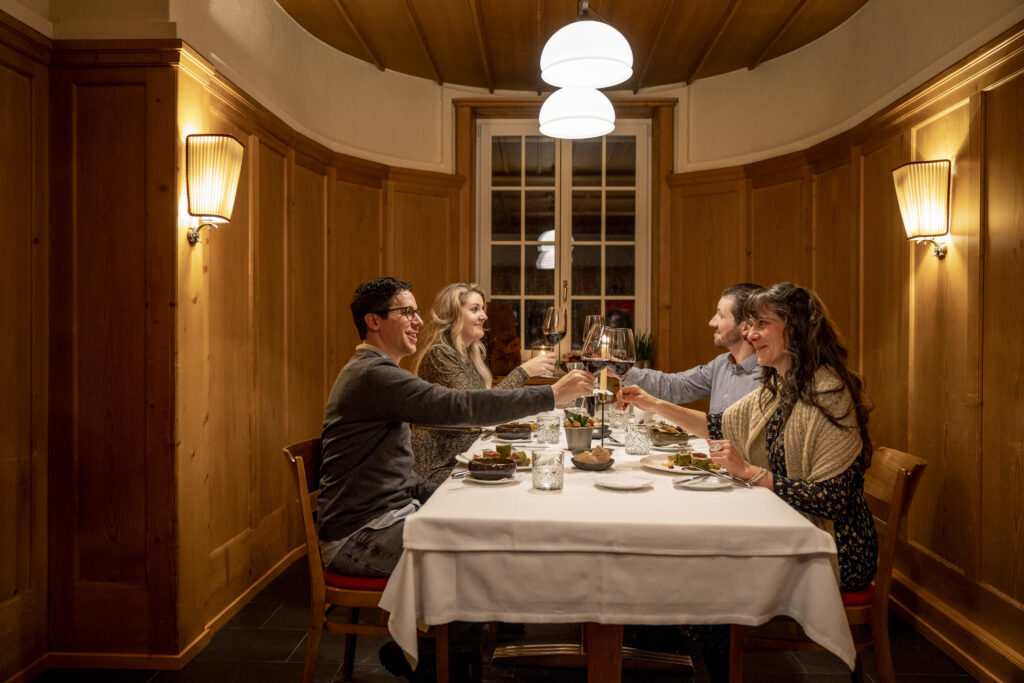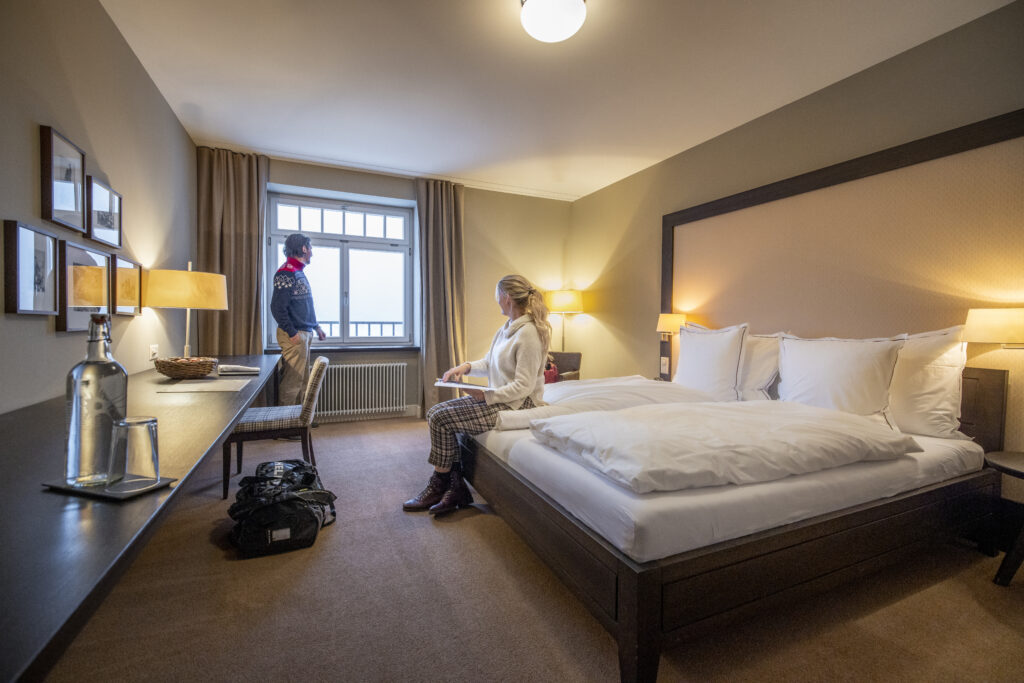History of the Grimsel Pass
Early days
The Alpine crossing from Oberhasli to Goms was probably already known to the original inhabitants given the Celtic finds at Guttannen). In Roman and early Germanic times, the was already a trade route.
The name Grimsel presumably dates back to Grimiso, i.e. the site of Grimo.
In Gallic (once formerly spoken in Valais), the name changed to Grimiso; the Valais village near Sion is probably called Grimisuat for a similar reason.
The Middle Ages: North-South transport
In the Middle Ages, the Grimsel played an important role in north-south traffic, offering the shortest route from Brugg to Milan via Lucerne .
It had an advantage over the Gotthard route in that there were no obstacles (like the ‘stiebende Steg’, the first Devil’s Bridge in the Schöllenen gorge).
The disadvantages compared to the Gotthard route were the lack of any one-pass routes to Italy and the topographically difficult and steep terrain.
Bern leaves the crossing of the Alps to the local population and has no active transport policy – which explains its failure.
1211 First documentary mention of Grimsel
Berchtold von Zähringen, the founder of Bern, crosses the pass with his troops to lead a raid into Upper Valais (although according to the Historisch-Biographisches Lexikon, the Lötschenpass was crossed.)
1382
The people of the Ober-Hasle valley (house of Bubenberg) buy the Grimselalp.
1397: The trade route is secured (the Grimsel Hospiz is mentioned for the first time)
Trade relations are regulated. A contract is concluded between the City of Bern and the people of the Bernese Oberland, Upper Valais, Pommat and Eschenthal regulating the extension and securing of the route via the Grymslen Hospital (and onwards over the Griesspass). To maintain the route, customs duties are levied in Guttannen and at the hospice.
Commerce is well organised with columns of pack animals passing the Grimsel via the Sbrinz route. Around 200 pack animals are used every week. Several storage buildings along the route are used for the short-term storage of transport goods.
The Säumer Ordinance obliges the villages to keep the route across the Grimsel open.
Trade goods:
From the south: Rice, wine, corn, oil, spices
From the north: Sbrinz cheese, hides, etc.
Military campaigns
1419: The Raron affair
A Bernese army crosses the Grimsel and suffers a defeat at Ulrichen against the Valais. On the way back, another battle takes place at the Grimsel Hospiz.
1425
Once again, a Bernese army crossed the Grimsel to relieve (liberate) the Schwyz people trapped in Domodossola.
Lake Totensee
1760: Known by this name by the time of Gottlieb Sigmund Gruner, the name derives from the lonely and wild location.
1799: According to legend, Lake Totensee got its name when the French fought against the Austrians and the bodies of the dead were thrown into the lake. (Next section)
Fighting between the French and the Habsburgs on the Grimsel
The Austrians encamp between Lake Grimsel and the top of the pass, blocking the French in Guttannen from crossing the pass. A local innkeeper leads some of the French to the pass over a hidden path (via Nägelisgrätli), whereupon the Austrians are attacked from two sides and suffer numerous fatalities.
Glacier research
The Neuchâtel glacier researchers Agassiz, Vogt, Nicolet and often visit the Grimsel Hospiz over a period of several years around 1840. Around this time, the Hôtel des Neuchâtelois was built on the Unteraargletscher.
Street & Traffic
Late 19th century: The Grimselbahn railway
The Grimselbahn railway project is already in existence, with the English engineer George Stephenson studying the line. However, the project is displaced by the Gotthard railway and is not pursued further.
1873-86:
Construction of the Meiringen-Guttannen road
1885: The Gotthard railway
The opening of the Gotthard railway brings an end to transports using pack animals, which are replaced by tourist traffic.
1891-95: The Grimselstrasse
The pass road to Gletsch was built by the cantons of Bern and Valais with federal subsidies (totalling two-thirds of the cost) and opened to traffic in 1895. The road is 4.2 metres wide. Lake Grimsel is crossed at its narrowest point and divided into two halves.
Around 1900: Development of tourism
Alongside the Simplon, the Grimselstrasse is one of the most beautiful roads in the Alps, and one of the most frequented by tourists. The road passes through areas of slate, gneiss and granite. The vegetation is lush, thanks to very high levels of rainfall and the strong effect of the Foehn winds. The Hotel Grimsel Hospiz offers a base for many excursions.
1921: The post van
The post van replaces the stagecoach and crosses the Grimsel Pass.
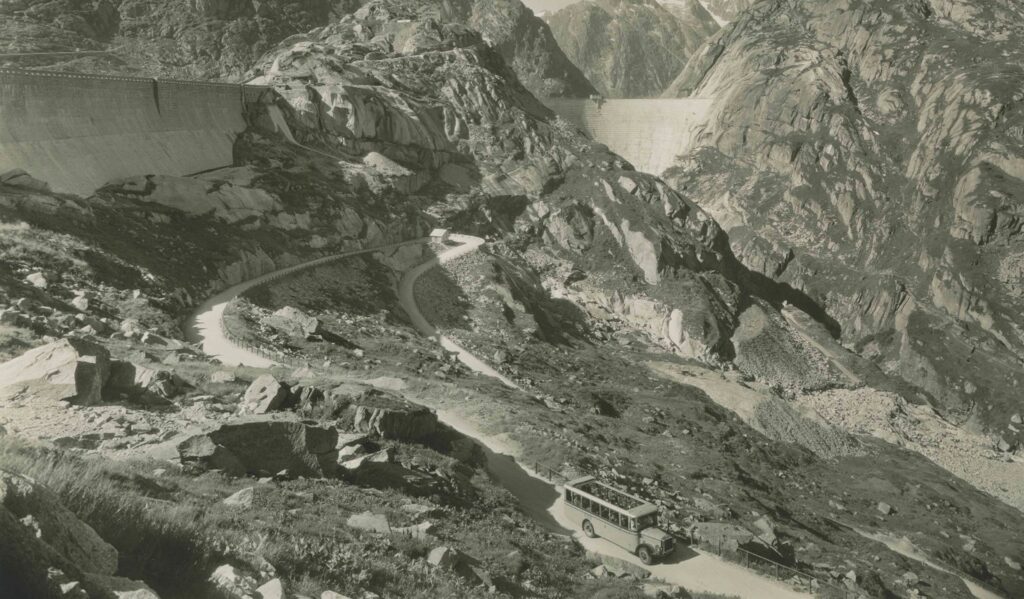
The Grimselpass-Strasse with the ‘Posthüttlicher’ in the background and the two dams (Spittallamm on the right, Seeuferegg on the left)
History of the old Grimsel Hospiz
The first hospice was probably a medieval foundation of the Order of Saint Lazarus (which owned the church at Meiringen) or the Augustinian monastery of Interlaken.
1397: First documentary reference
The hospice serves to secure the trade route via the Grimsel. A contract is concluded between the City of Bern and the people of the Bernese Oberland, Upper Valais, Pommat and Eschenthal for the upgrading and securing of the route via the Grymslen Hospital (and onwards over the Gries Pass). As a result, a ‘hospital’ (i.e. a shelter and lodging facility) was already in existence at the time.
1474: ‘Bättelbrief’ (in the State Archives)
Before the Reformation, the hospice was probably inhabited by monks. After the Reformation, the Oberhasli region elects an administrator known as a ‘Spittler’, who must provide accommodation for needy travellers free of charge. In winter, the administrator is allowed to collect bounties for sustenance by means of a ‘bättelbrief’, or begging letter. However, this collection is later banned due to fraud.
1544: Poor hostel
As the chronicler Johannes Stumpf reported on the Grimsel Hospiz, “It is a poor hostel, but there you find generally good wine, brought by pack animals across the mountains from Eschental and Valais …”. At this time, the Grimsel Hospiz was all about card games and excess drinking.
1547-57: Refurbishment
First known major renovation of the hospice with several extensions.
1799: Reconstruction
The Grimsel Hospiz is left in poor condition after the turmoil of war and is practically rebuilt.
1822: Enlargement
The Grimsel Hospiz was enlarged by Jakob Leuthold, the administrator at the time, to include a spacious dining room and 15 bedrooms. “A stone staircase leading from the exterior to the first floor has given the whole building a more pleasing appearance.”
1838: Avalanche
The Grimsel Hospiz is buried by an avalanche: the roof is torn away and all rooms (except that of the servant and his dog) are filled with snow. “During the reconstruction, a tower-like protrusion made of granite blocks is added to the hospice as a snowbreaker on the side facing the summit of the pass. The lower part of this can be seen as far as the dam spanning Lake Grimsel.”
1852: Fire
Fearing his contract would not be extended, Peter Zybach, the leaseholder at the time, had the hospice set on fire by the winter servants. The fraud is quickly discovered and Zybach is sentenced to death. Zybach is pardoned, however; first he is imprisoned in chains, then deported for 20 years. The Zybach case is known throughout Europe.
1853: Reconstruction
The hospice is rebuilt, more or less retaining its design. Various extensions and expansions are undertaken until 1902.
1902: Conversion to the Grimselhotel
The Grimsel Hospiz is sold along with the Handeck inn to one E. Liesegang-Perrot (private individual) and converted into a mountain inn.
1909: Sale
Bernische Kraftwerke (BKW) acquires the entire Grimsel property for the purpose of constructing a reservoir at Aarbboden.
1925
The BKW project is approved in the Bernese referendum.
1928
The old Grimsel Hospiz sinks into Lake Grimsel.
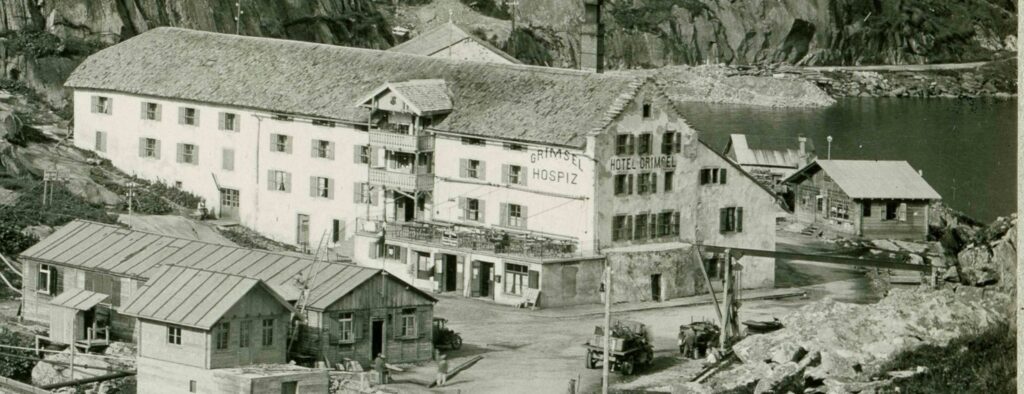
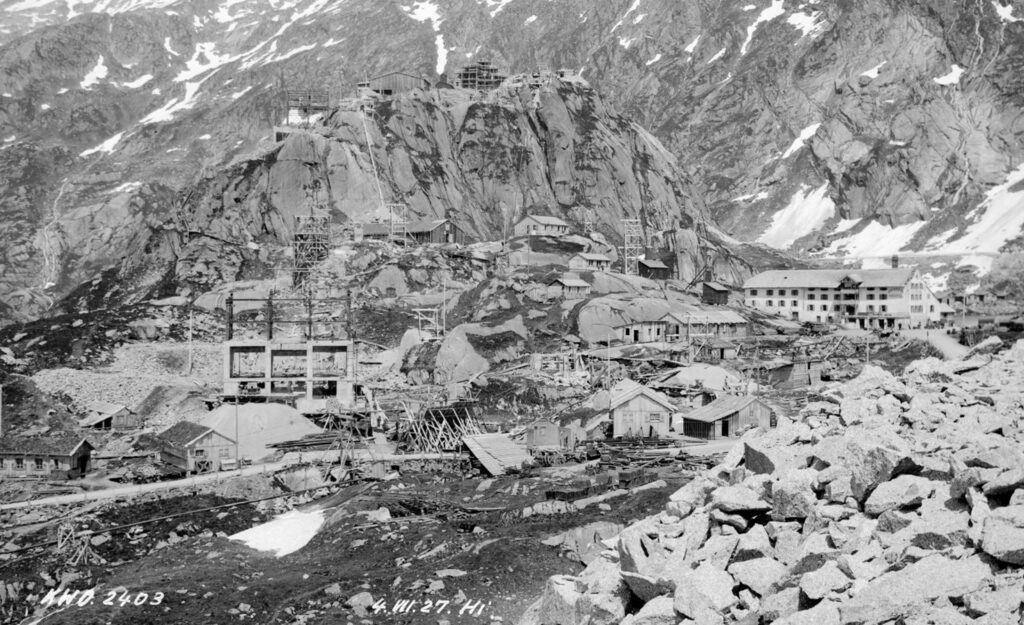
History of the new Grimsel Hospiz and power plants
1906: Acquisition of concessions
Bernische Kraftwerke (BKW) acquires the concession to exploit hydroelectric power on the Aare. A precipitation and runoff monitoring service is established to provide valuable data for the subsequent development of the concession project.
1920: General concession project
The Bureau Narutowicz is set up with reference to the geological survey of Professor Albert Heim and Paul Arbenz, a project that will later serve as the basis for the studies of A. Kaech and the three-stage Project 1922.
To 1924: Preparation of the project
The first stage of the dam involves Lake Grimsel with the Spitallamm and Seeuferegg dam walls and a connecting tunnel over 5 kilometres long to Lake Gelmer, which is also dammed to form a barrier and serve as a further water reservoir. Exhibited at the KABA event in Burgdorf in 1924, the project is authored by Chief Engineer A. Kaech from BKW. The project is submitted to a commission of experts for approval.
1925: Establishment of a public limited company
Kraftwerke Oberhasli AG (KWO) is founded on 20 June 1925.
Government bond
On 25 April 1925, the Canton of Bern voted to approve a government bond of 12 million Swiss francs for KWO.
The situation in 1927
First construction stage: Gravel processing and concreting plants, as well as pre-sorting and stone crushing plants. The sorting plant, the silos for sand, gravel and cement and the concreting plant, are located in a large iron-framed building at the top of the northwest slope of the Grimsel-Nollen. Four large concrete mixers perched on the summit of the Nollen for the construction of the Spitallamm dam. Concreting work for the dam wall on the Seeuferegg has begun. The dam wall at Lake Gelmer is completed. Materials are transported via the Handeck funicular railway. “For all high-rise buildings, the construction management took an extremely practical approach, with the most durable construction in granite brickwork for exposed surfaces and reinforced concrete for the interior constructions.”
1928: ‘Festival of Work’
Ludwig von Roll’schen Eisenwerke AG Gerlafingen (later Von Roll AG) arranges a festive celebration. As A. Kaech points out, this was the first time only Swiss rather than foreign industrial products were used for all important part of the installations.
The new Grimsel Hospiz is under construction.
1934
“Although the new Grimsel Hospiz bears no relation to the work in organisational terms, replacement of the old hospice with a new building was one of the conditions laid down when the concession was granted. The new building no longer has the venerable character of the old mountain pass hostel: it has transformed into a luxury hotel catering to the needs of car travellers. Especially amid the magnificent surroundings of the high mountains, guests are doubly aware of the full effects of the design; even the two circular bay windows seem to be a playful misinterpretation of the cubic form. The work on the hotel, which the architect was obliged to perform, presents a relatively discreet exterior; on the whole, the structure on the avalanche-proof Nollen is well planned.” – The many bevelled window reveals, as in the case of the Engadine houses, are evidently due to the thickness of the granite walls. “All guest rooms are panelled with fir wood, with flooring of cork tiles, electric heating and running water … the lower hall and the dining room also have fir panels … stairs are lined with rubber.” “The brickwork and the tin roofs require painstaking precision, as the tremendous wind strength in the high mountains drives rain and snow into the tiniest joints.” “The architect is not responsible for the Persian carpets, which are very out of place here.” “The hall and dining room are entirely panelled with Swiss pine. A sophisticated lighting system enables a wide range of lighting effects, which a clientele of travellers spoiled by the cinema clearly cannot do without, even here.”
2007-2009: Renovation
The Grimsel Hospiz undergoes sensitive renovation by the architect Andrin Schweizer in consultation with the authority for the preservation of historic monuments. The buildings on the Nollen are reduced in the interests of nature conservation and the protected area of the BLN (Federal Inventory of Landscapes and Natural Monuments of national importance). For reasons of monument preservation, the façade is refurbished without changing the essential appearance. The history of the building is preserved in all rooms and halls. The entire building is heated with waste heat from electricity production in an environmentally friendly way.
2010: A winter oasis
For the first time, guests stay at the Grimsel Hospiz winter oasis.
